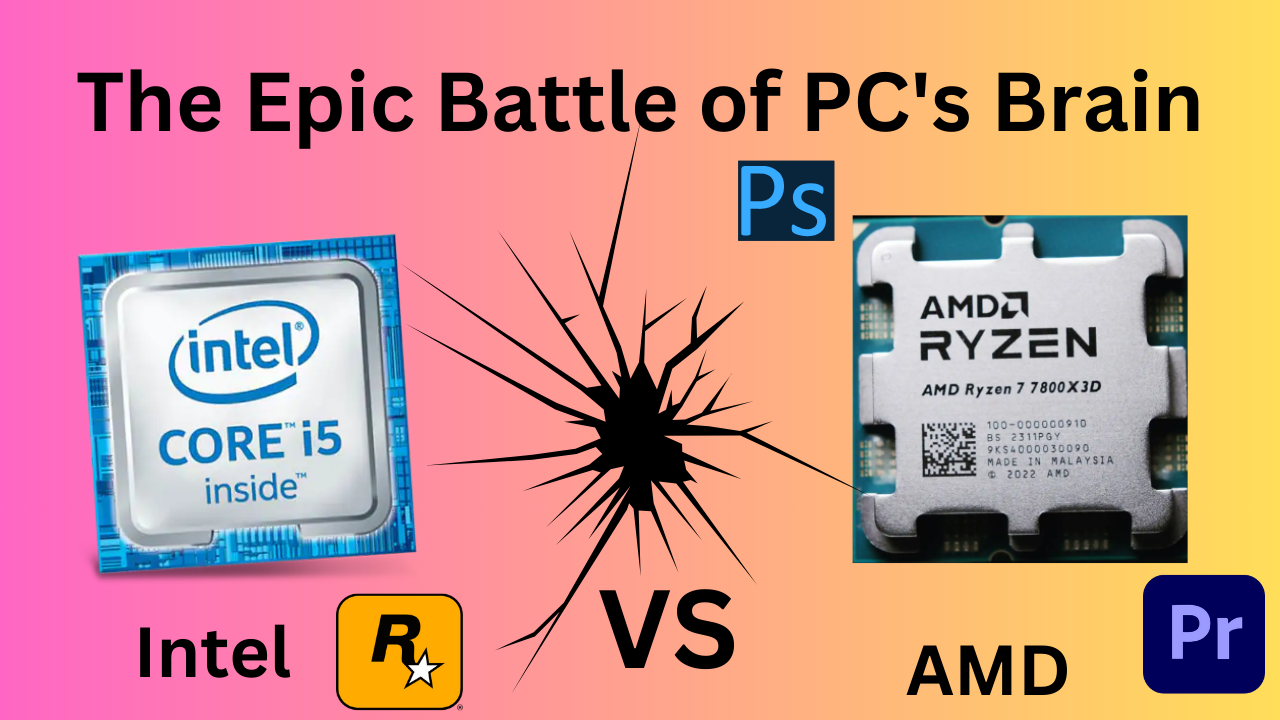In the ever-evolving world of computing, the rivalry between Intel vs AMD has become a saga of epic proportions. It’s a battle of giants, where innovation and performance are the ultimate prizes. So, why has AMD suddenly re-emerged as a formidable competitor? And has Intel’s dominance been challenged because AMD pushed harder, or has Intel been resting on its laurels? Let’s dive into this thrilling showdown.
The Titans of Tech: A Brief History (Intel vs AMD)
Intel, founded in 1968, has long been the cornerstone of computer processing. With its iconic “Intel Inside” slogan, it’s hard to forget the impact Intel has had on the industry. From the groundbreaking 8086 processor to the powerful Core i9 series, Intel has dominated the market with relentless innovation.
On the other hand, AMD (Advanced Micro Devices), established in 1969, has often been the underdog in the shadow of Intel’s colossal presence. Known for its budget-friendly yet high-performance CPUs, AMD’s journey has been one of perseverance and grit.
The Rise of AMD: A New Dawn
In recent years, AMD has experienced a dramatic resurgence. The Ryzen and EPYC series have shaken the foundations of computing, challenging Intel’s long-held supremacy. But what sparked this remarkable comeback?
- Relentless Innovation: AMD’s latest processors, built on the Zen architecture, have showcased impressive advancements in performance and efficiency. By leveraging cutting-edge 7nm and 5nm manufacturing processes, AMD has delivered powerful chips that outpace their competition in both single-threaded and multi-threaded tasks.
- Aggressive Pricing: AMD’s strategic pricing has made high-performance computing accessible to a broader audience. Offering competitive performance at lower prices has won AMD significant market share, especially in the gaming and content creation sectors.
- Technological Breakthroughs: The introduction of features like PCIe 4.0 and advanced multi-core technology has positioned AMD as a trailblazer in the industry. Their focus on improving overall system performance rather than just clock speeds has resonated well with consumers and professionals alike.
Intel’s Challenge: Complacency or Strategic Oversight?
So, what happened to Intel? Was it a case of resting on their laurels, or was there a strategic misstep? Let’s examine the potential reasons behind Intel’s struggles:
- Innovation Lags: Intel’s struggle with its 10nm manufacturing process led to delays in rolling out new processors. While AMD embraced new technologies swiftly, Intel faced challenges in catching up, resulting in slower product cycles and stalling innovation.
- Market Saturation: For years, Intel enjoyed an almost monopolistic position. This dominance may have led to a lack of urgency in pushing the envelope. Intel’s focus on incremental improvements rather than groundbreaking advancements may have contributed to its vulnerability.
- Leadership Changes: Frequent changes in leadership and management strategies could have impacted Intel’s ability to execute a coherent vision. While AMD pursued aggressive R&D and market strategies, Intel’s internal shifts may have disrupted its innovation momentum.
The Epic Showdown: Intel vs AMD
Performance: AMD’s Ryzen processors have consistently demonstrated impressive performance gains, particularly in multi-threaded applications. Intel’s latest Core processors, however, continue to shine in single-threaded tasks. The choice between them often boils down to specific use cases.
Value for Money: AMD’s competitive pricing and high core counts make it a favorite among budget-conscious consumers and enthusiasts. Intel’s premium pricing often comes with higher single-threaded performance but may not always offer the same value for money.
Future Outlook: With AMD’s aggressive roadmap and Intel’s plans to regain its edge, the future promises even more thrilling developments. AMD’s recent achievements suggest a continued push for excellence, while Intel’s efforts to catch up could lead to new innovations.
Conclusion
The Intel vs AMD rivalry is far from over. AMD’s resurgence is a testament to its relentless pursuit of innovation and value, challenging Intel’s long-standing dominance. Meanwhile, Intel’s response will shape the future of computing, potentially leading to a new era of technological breakthroughs.
In this high-stakes battle, consumers are the ultimate winners, benefiting from better performance, more choices, and competitive pricing. So, whether you’re Team Intel or Team AMD, buckle up—this is one tech showdown that promises to keep evolving and exciting for years to come.
Explore : iPhone Vs Android



